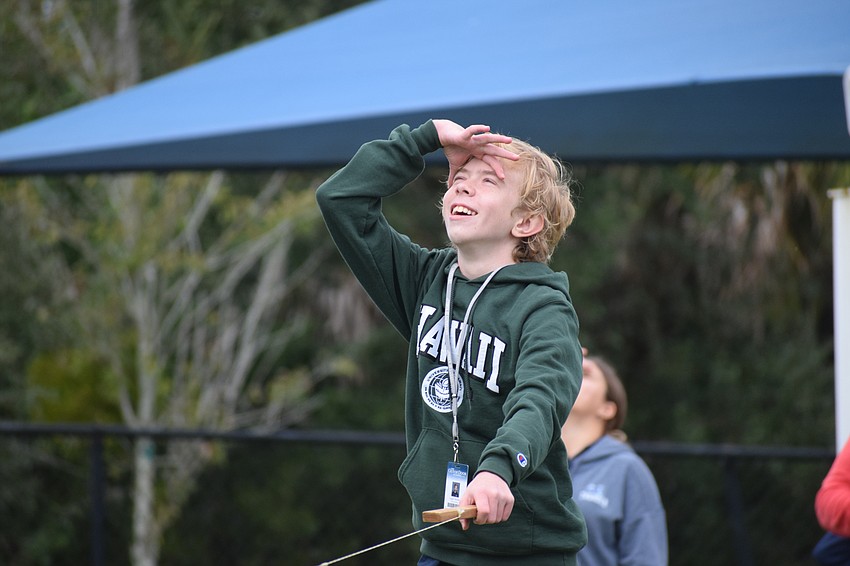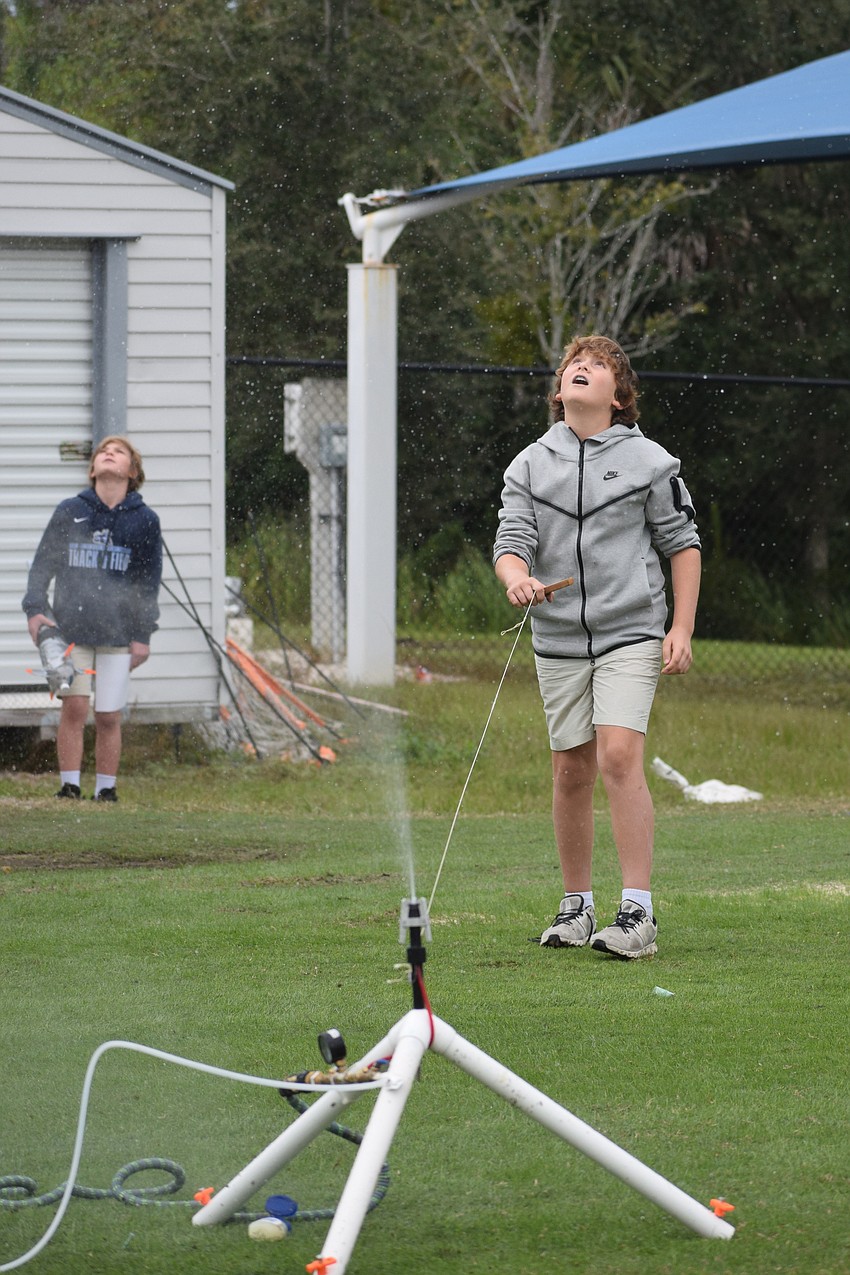- January 29, 2025
-
-
Loading

Loading

Logan Abrams, an Out-of-Door Academy sixth grader, waited in anticipation as his bottle rocket was filled with its fuel, in this case, water.
He was waiting for the water pressure to reach 100 pounds per square inch, which would effectively launch it into orbit. Abrams wanted to see if his research on the best way to build a bottle rocket would pay off.
He learned the psi should be between 90 and 100 for the best results.
Three. Two. One. Blast off.
Abrams shielded his eyes from the sun as he saw his rocket launch at least 400 feet in the air.
“Hopefully it doesn’t hit any cars,” said Johnathan BySura, Abrams’ science teacher.
The class watched in amazement as Abrams’ rocket just missed a few cars in the parking lot of ODA’s practice fields and landed with a splash in a lake.

BySura said the rockets were not only a lesson in design and research but also a lesson on not giving up and readjusting.
“Knowing they probably failed the first time but didn’t give up is something I keep using as the basis of my classes,” he said. “In not just middle school, but in life in general. Failure is OK because you learn from those mistakes and then we redesign and do it better the next time.”
BySura said some students, like Abrams, invested all their free time outside of the classroom on the project.
Abrams created his nose cone using cardstock — a thick construction paper — and then made the fins out of plastic. He added putty to the inside of the nose cone to add weight.
He said the launch proved the “sweet spot” was indeed 100 psi.
When sixth grader Ethan Burnstein found out he had to build a rocket, he said he felt pure joy. He already had experience building a rocket in fifth grade and modeled his current rocket after what he produced then. His goal was to make a huge rocket with long, aerodynamic fins to make the rocket spiral like a football so it would go high in the air.
But Burnstein’s design wasn’t perfect the first time around.

BySura said Burnstein’s initial rocket design was off kilter because he had a bent nose cone. As a result, it didn’t go as high as expected.
“He thought he would do so great the first time around because he won this event in elementary school,” BySura said. “He’s another kid who took design to heart. Seeing his excitement for it is why we do it. It’s why teachers teach. That’s the whole point.”
Burnstein learned from his first launch. He made the cone of his rocket as straight as possible. He 3D printed slightly bent fins that helped with making the rocket spin like a football.
He also chose to increase the pressure from 85 psi to 110 psi, which ultimately launched the rocket higher.
After pulling the string to launch his rocket, Burnstein threw his hands up in celebration as his rocket shot up 300 feet. He ran to retrieve his rocket like Rocky Balboa running up the stairs of the Philadelphia Museum of Art in “Rocky” shouting in excitement.
Burnstein’s previous attempt was forgotten.
Abrams, Burnstein and sixth grader Reese Middleton all said they enjoyed the design process, and learning from their mistakes.
Middleton was proud of her rocket, especially for the design. She made it look like a Christmas tree and named it “Shooting Star.”
“It looked like an exploding Christmas tree,” she said.